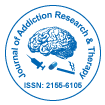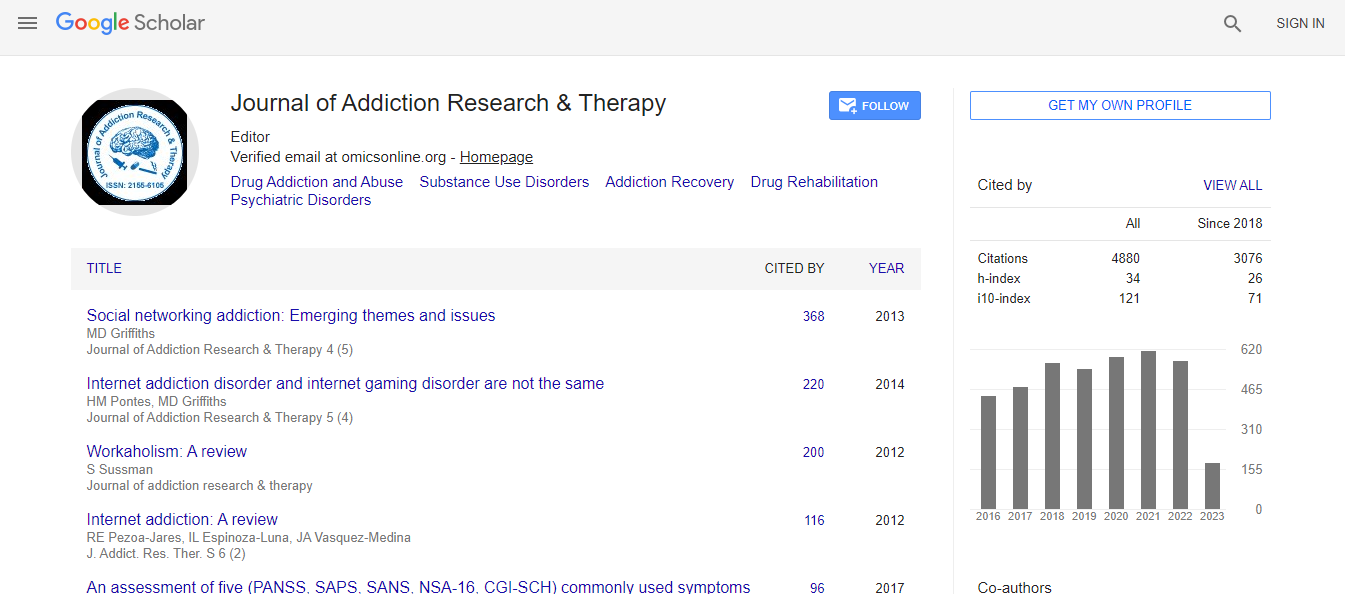Our Group organises 3000+ Global Conferenceseries Events every year across USA, Europe & Asia with support from 1000 more scientific Societies and Publishes 700+ Open Access Journals which contains over 50000 eminent personalities, reputed scientists as editorial board members.
Open Access Journals gaining more Readers and Citations
700 Journals and 15,000,000 Readers Each Journal is getting 25,000+ Readers
Google Scholar citation report
Citations : 4859
Journal of Addiction Research & Therapy received 4859 citations as per Google Scholar report
Journal of Addiction Research & Therapy peer review process verified at publons
Indexed In
- CAS Source Index (CASSI)
- Index Copernicus
- Google Scholar
- Sherpa Romeo
- Open J Gate
- Genamics JournalSeek
- Academic Keys
- JournalTOCs
- SafetyLit
- China National Knowledge Infrastructure (CNKI)
- Electronic Journals Library
- RefSeek
- Hamdard University
- EBSCO A-Z
- OCLC- WorldCat
- SWB online catalog
- Virtual Library of Biology (vifabio)
- Publons
- Geneva Foundation for Medical Education and Research
- Euro Pub
- ICMJE
Useful Links
Recommended Journals
Related Subjects
Share This Page
Dynamics of the human effective connectome at rest revealed by functional neuroimaging
8th International Conference on Addiction Psychiatry
Radu Mutihac
University of Bucharest, Romania
Posters & Accepted Abstracts: J Addict Res Ther
Abstract
Studies of brain connectivity alterations using resting-state functional magnetic resonance imaging (rsfMRI), diffusion tensor imaging (DTI), and more recently diffusion spectroscopic imaging (DSI) data have advanced and enlarged our knowledge on the organization of large-scale structural and functional brain networks, which consist of spatially distributed, but functionally linked regions that continuously share information. Brain’s energy is largely consumed at rest during spontaneous neuronal activity (~20%), while task-related increases in metabolism energy are minor (<5%). Spontaneous ultralow-frequency fluctuations in BOLD-based rsfMRI signals (<0.01Hz) at the level of large-scale neural systems are not noise, but orderly and organized in a series of functional networks that permanently maintain a high level of temporal coherence among brain areas that are structurally segregated and functionally linked in resting state networks (RSNs). Some RSNs are functionally organized as dynamically competing systems both at rest and while performing various tasks. The default mode network (DMN), the most important RSN, is even more active during rest and involved in realization of tasks like memory retrieval, emotional process, and social cognition. Cortical connectivity at rest is reportedly altered in several neurological and psychiatric disorders. Most recently, human brain function has been imaged in fMRI, and thereby accessing both sides of the mind-brain interface (subjective experience and objective observations) has simultaneously been performed. As such, functional neuroimaging moves onto new potential applications like reading the brain states, discriminate neurological dysfunctions (if any), brain-computer interfaces, lie detection, and alike. The contribution aims to review and evaluate the most current approaches for early detection and classification of cognitive impairments and dementia, particularly among syndromes with relatively similar behavioral effects, based on alterations in brain connectivity at rest explored by rsfMRI, DTI, and DSI.Biography
E-mail: mutihac@gmail.com

 Spanish
Spanish  Chinese
Chinese  Russian
Russian  German
German  French
French  Japanese
Japanese  Portuguese
Portuguese  Hindi
Hindi 
